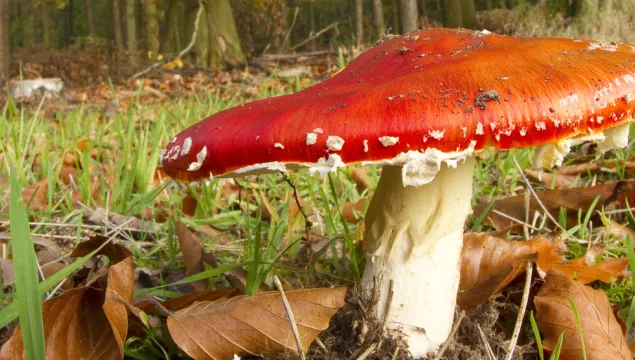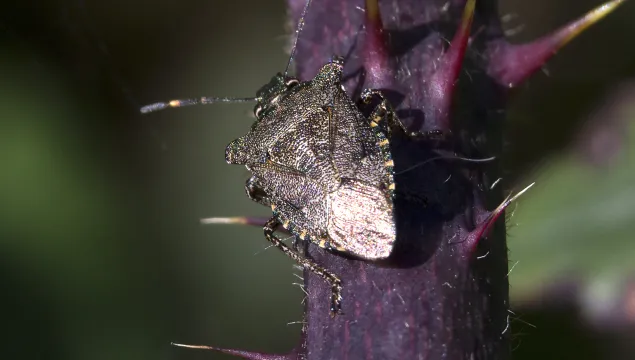
Fly agaric
The classic fairy tale toadstool, this red and white fungus is often found beneath birch trees in autumn.

The classic fairy tale toadstool, this red and white fungus is often found beneath birch trees in autumn.
Once widespread, this attractive plant has declined as a result of modern agricultural practices and is now only found in four sites in South East England.

Unlike many of its relatives, this shimmering shieldbug is a predator, feasting on caterpillars and a variety of other insects.
A bushy brown seaweed that appears bright blue underwater.
A scarce but distinctive brown seaweed with curved, funnel-shaped fronds. It is a warmer water species at the northern edge of its range on the south coast of England.
Often confused with the larger but similarly shaped lion’s mane jellyfish, the blue jellyfish can be colourless when young and develop a striking blue-purple bell as it matures.
The mohawk-sporting caterpillar of this moth is often seen on shrubs and trees in late summer. As adults the orange-brown males fly by day, but the flightless females don't stray far from their cocoon.
The porbeagle shark is a member of the shark family Lamnidae, making it one of the closest living relatives of the great white shark.
This slender shark gets its name from the spines in front of its dorsal fin. It can use these spines to defend itself by curling in a bow and striking at a predator.
The undulate ray has beautiful wavy patterns on its back, which helps it camouflage against the sandy seabed.
It’s easy to identify this distinctive skate from the black and yellow marbled eye spots on each wing.
The spotted ray is one of the smallest species of skate, growing to only 80 cm.